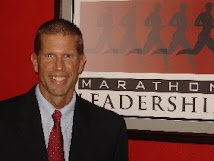David D. Knapp, Ph.D.
2010 and Situational Leadership®: The Year of R3
I recently read an online article about 2010 being the "Year of the Tiger" on the Chinese calendar. After reading it, I started thinking about what I would call this year from a Situational Leadership® perspective -- and it didn't take me long to come up with an appropriate label. I think 2010 should be called "The Year of R3."
Performance Readiness® Level R3
Dr. Paul Hersey's Situational Leadership® model is based on four Performance Readiness® levels:
- R1 (Unable and Insecure or Unwilling)
- R2 (Unable but Confident or Willing)
- R3 (Able but Insecure or Unwilling)
- R4 (Able and Confident and Willing)
These four Performance Readiness® levels are determined by the degree of demonstrated ability and willingness to accept, own, and perform a specific task or activity at a sustained, acceptable level. Consequently, people are a collection of different levels of readiness -- depending on the specific task they are being asked to perform.
For example, I may be R1 on the task of completing my expense reports (procastinating, not completing them, completing them late); R2 on the task of building a web site (enthusiastic but clueless, eager for input, quick to act); R3 on delivering a training course I've facilitated hundreds of times before (bored, burned out, ready for a new challenge); and R4 on project managing a curriculum design effort (performing to high standards, operating autonomously, meeting deadlines with ease)...all on the same day!
2010: "The Year of R3"
So why do I think this year will go down as "The Year of R3" when we display all for readiness levels, depending on the task we're performing? I'm basing my claim on the results of two recent studies that seem to indicate American workers are still performing well on their task (Able) but doing so with much less enthusiasm, security, and satisfaction than in the past (Unwilling or Insecure).
Specifically, the 2009/2010 U.S. Strategic Rewards Survey by Watson Wyatt and WorldatWork, an association of HR professionals, found a sharp decline in the morale and commitment of American employees -- especially among top performers. Some of their key findings include the following:
- Engagement levels among all employees dropped 9% since 2008, while engagement levels among top performers fell a staggering 25%.
- Approximately 36% of top performers say their employment situation has worsened over the past year.
- The number of top performers who would recommend their company to other job seekers dropped 20%.
- There was a 14% drop in the top performers who said they would remain with their companies versus taking a job elsewhere.
These sobering findings were reinforced by a recent study conducted by TNS for the Conference Board -- a research group that has studied American job satisfaction for 22 years. A few of their key findings are as follows:
- Only 49% of Americans reported satisfaction with their jobs -- the lowest level ever recorded by the Conference Board.
- Only 51% of Americans now find their jobs interesting -- which is another low for the survey's 22-year history.
- Workers under the age of 25 (members of the "Generation Y" or "Millennial Generation") are the least satisfied -- around 64% of them say they are unhappy in their jobs.
- Only 43% of workers feel secure in their jobs.
- Barely a majority (51%) say they are satisfied with their boss.
Conclusion
The results of these surveys seem to indicate the American workforce is filled with individuals displaying Performance Readiness® level R3 on many of their tasks. Consequently, effective leaders should be honing their diagnosis skills, as well as their S3 High Relationship/Low Task Leadership Style skills -- a topic that will be the subject of my next posting.
To learn more about Dr. Paul Hersey's Situational Leadership® model, check out the Center for Leadership Studies' web site (http://www.situational.com/) or call the Center at 1-800-330-2840. You can contact me directly at david@marathonleadership.org.
Warmest Regards,
Dr David Knapp
Follow Dr. Hersey on Twitter


